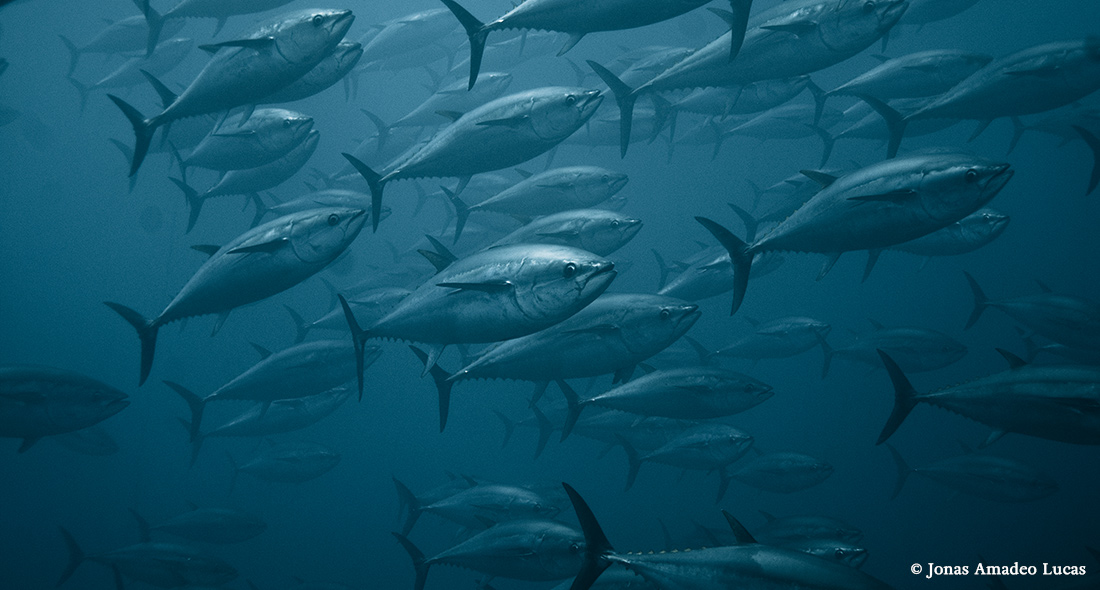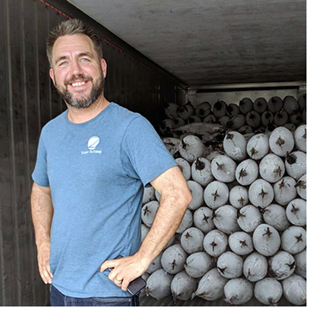Tuna
Tuna fisheries are some of the most important but challenging fisheries to sustainably manage.

A sustainable future for tuna rests on our ability to change the way we fish and manage tuna resources.
According to the FAO, roughly 7.7 million tonnes of tuna and tuna-like species were caught in 2013—a staggering growth in catches from the 1950s when fewer than 0.6 million tons of tuna were caught. Tuna considered principal market tuna species—that is albacore, bigeye, bluefin (three species), skipjack and yellowfin—accounted for about 70 perfect of the tuna caught, the majority of which was harvested from the Pacific. Skipjack, the most plentiful and productive principal market tuna, accounts for about 66 percent of principal tuna catch, followed by yellowfin and bigeye (about 25 and 10 percent, respectively). This growth in catch hasn’t always been matched by improved management; among the seven principal tuna species, 41 percent of stocks were estimated to be fished at biologically unsustainable levels.
Tuna fishing takes place in national waters as well as on the high seas, where ineffective international management makes sustainable fishing a challenge. Tuna fisheries management takes place via multi-national cooperation delivered through treaty systems and regional fisheries management organizations (RFMOs). While these systems can potentially be effective at defining policy, their member countries often lack the ability to implement or ensure compliance at local, national, and ocean levels, putting tuna resources at risk.
What is a RFMO?
A RFMO is an international body made up of countries that share a practical and/or financial interest in managing and conserving fish stocks in a particular region. RFMOs are established by international agreements or treaties and can take different forms. Some focus on regulating fishing for a particular species or group of species. Others have a broader mandate, with responsibility to ensure that the fishery does not negatively affect the wider marine ecosystem and the species within it. RFMOs face substantial challenges in decision-making, including a lack of political commitment, comprehensive compliance by members, as well as a lack of effective control of non-member activities.
Despite these challenges, positive transformation of tuna management is gaining momentum, especially in the canned tuna fisheries (which primarily target skipjack and albacore tunas). This includes the adoption of improved management strategies through Harvest Control Rules, collaborative work through programs such as the United Nation Food and Agriculture Organization’s Areas Beyond National Jurisdiction program which trains local tuna managers on best practices, and a growing consumer awareness regarding the critically endangered status of select tuna populations.
Tuna Fishery Improvement Projects:
- Indian Ocean Albacore Tuna Longline FIP
- Nachi Katsuura Albacore Longline FIP
- South Pacific Albacore and Western and Central Pacific Yellowfin Tuna Longline FIP
Stories from the Field: Tuna
- Improvement Efforts Lead to More Sustainable Fishing Practices in Japanese Sea Perch and Tuna Fisheries
- Bumble Bee Foods and FCF Partner with Ocean Outcomes to Improve Longline Tuna Fisheries
- Experts Responsible for World’s Largest Tuna Fisheries Come Together to Work Towards More Sustainable Management
- Sixth Tuna Management Workshop Takes Best Practices to West Africa Through Two Days of Hands-on Trainings
- Japan Looks to Improve Key Tuna Fisheries as Part of Blossoming Sustainable Seafood Movement
- Fifth Tuna Management Workshop Advances Knowledge of Tuna Sustainability in the Pacific Ocean
- O2 Supports 2nd Indian Ocean Tuna Management Workshop in Sri Lanka
- Expanding Capacity and Expertise in Policy, IUU, and China
- Iki Island Fishermen Take Inspired Action To Preserve Precious Bluefin Tuna
Meet O2's Tuna Expert
 Daniel’s 20 years of experience in fisheries and marine conservation is driven by a passion for fisheries, the ocean, and marine life. He has become an expert in tuna and sustainable market tools that drive change in fisheries and seafood supply chains. At O2 he is responsible for expanding O2’s portfolio of work, including tuna. Prior to O2, Daniel spent six years at World Wide Fund for Nature’s (WWF) global fisheries initiative (Smart Fishing Initiative), most recently as Deputy Leader. There he lead WWF global engagement in tuna fisheries and provided strategic direction to WWF International on seafood engagement. His past experience also includes a role as Senior Fisheries Certification Manager for the Marine Stewardship Council. Daniel holds a B.Sc in Biology from the University of London and an M.Sc. in Conservation from University College London. He is a keen climber and hiker, and enjoys getting out into the wild as much as he can.
Daniel’s 20 years of experience in fisheries and marine conservation is driven by a passion for fisheries, the ocean, and marine life. He has become an expert in tuna and sustainable market tools that drive change in fisheries and seafood supply chains. At O2 he is responsible for expanding O2’s portfolio of work, including tuna. Prior to O2, Daniel spent six years at World Wide Fund for Nature’s (WWF) global fisheries initiative (Smart Fishing Initiative), most recently as Deputy Leader. There he lead WWF global engagement in tuna fisheries and provided strategic direction to WWF International on seafood engagement. His past experience also includes a role as Senior Fisheries Certification Manager for the Marine Stewardship Council. Daniel holds a B.Sc in Biology from the University of London and an M.Sc. in Conservation from University College London. He is a keen climber and hiker, and enjoys getting out into the wild as much as he can.